2021 Seminars
Controlling Energy Transfer in Nanocrystal-Chromophore Complexes
November 17, 2021

Jeffrey DuBose is a fifth-year graduate student advised by Prof. Prashant Kamat in the Department of Chemistry and Biochemistry. He presented "Controlling Energy Transfer in Nanocrystal-Chromophore Complexes" at the ND Energy PD&GS Seminar in November 2021.
After receiving a Patrick and Jana Eilers Graduate Student Fellowship for Energy Related Research in 2020, DuBose was awarded the 2021 Forgash Fellowship for Graduate Student Research in Solar Energy. His recent research has focused on the use of lead halide perovskites, a class of synthetic materials which are useful in converting solar energy directly into electricity (photovoltaics) or chemical fuels (photocatalysis).
The major goal of DuBose’s research project was to understand the fundamental steps that occur after a halide perovskite nanocrystal absorbs light. Particularly, DuBose and his collaborators in the Kamat group are interested in where the energy goes and if it can be harvested to do useful work.
“We sought to establish what parameters control the mechanism of interaction to start to build a system that mimics photosynthesis,” DuBose said.
Through careful spectroscopic measurements, the group was able to demonstrate that perovskite nanocrystals deliver their energy to a molecular chromophore, in this case rhodamine B, through a singlet energy transfer process.
“This means that after energy transfer, the electron spins of the excited molecular chromophore are opposite to another, which dictates the lifetime of the excited state and ultimately what further reactions are possible,” DuBose said.
The group leveraged halide ion exchange chemistry to develop an inventive method to study the mechanism of energy transfer. The light absorption and emission properties of perovskites are easily modified by adding a source of halogen ions. Using this technique, they studied how the perovskite-chromophore interactions changed as a function of halide content, which revealed that the singlet energy transfer process occurs through a long-range Förster mechanism.
“This level of information is crucial for fully optimizing energy transfer systems for renewable energy applications,” DuBose said.
Unexpectedly, the group discovered that certain perovskite nanocrystals were undergoing an undesired change in morphology, or size and shape, during initial experiments. Rather than being discouraged by this undesired result, DuBose took the opportunity to further investigate why these nanoparticles were undergoing a transformation.
“This was a great example of how a ‘problem’ or a negative result can actually be turned into a new research opportunity to answer questions that are important in a field,” DuBose said.
For the spin-off project, DuBose was able to work closely with undergraduate student and ND Energy Slatt scholar Andrew Christy, who co-authored a publication on this work titled, “Transformation of Perovskite Nanoplatelets to Large Nanostructures Driven by Solvent Polarity.”
“We dug into the mechanism of the phase transformation and discovered that certain polar molecules or increased temperature was causing the phase transformation,” DuBose said. “We were then able to describe the thermodynamics of the process and suggest ways to mitigate the unwanted morphology change.”
In 2021, DuBose was awarded the Experiment Physical Chemistry Award for Excellence in Graduate Research from the American Chemical Society. At the award symposium this past fall, he gave a talk on the energy transfer research highlighted here.
“This research provides a groundwork for understanding and chemically modifying these systems to harness more light for solar cells, or to create chemical fuels,” DuBose said. “The results from this research directly provide scientists and engineers better design rules for harnessing solar energy in artificial photosynthesis applications which can be used to provide renewable solar energy.”
The solar energy field is already experiencing a great deal of growth due to record low prices for solar panels, and lead halide perovskites have the potential to drive these prices even lower with their low cost and superior efficiency.
“With global energy demand quickly increasing, the world will need more renewable and clean energy solutions within the global energy portfolio to offset the environmental impact of greater energy demand,” DuBose said.
DuBose is currently interviewing for post-doctoral research positions at several universities and national laboratories. He will continue to research renewable energy; however, he intends to shift focus from light-induced processes (photochemistry) to voltage-induced processes (electrochemistry).
“My goal is to hone my skills in electrochemistry and prepare myself for an independent career in science, either in a university or national laboratory setting,” DuBose said.
DuBose has been developing his pedagogy by creating video lectures on measurement techniques that are relevant to energy research. In the future, he hopes to continue developing his pedagogy and mentorship in his independent career.
Electron Beam Characterization of Infrared Plasmons in Doped Semiconductor Nanocrystals
November 17, 2021
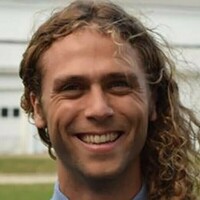
Agust Olafsson is a fifth-year graduate student advised by Jon Camden, Professor and Director of Undergraduate Studies in the Department of Chemistry and Biochemistry. He presented “Electron Beam Characterization of Infrared Plasmons in Doped Semiconductor Nanocrystals” during the ND Energy PD&GS Seminar in November 2021.
Olafsson received a 2021 Patrick and Jana Eilers Graduate Student Fellowship for his research on understanding energy transfer at the nanoscale. He investigates how microscopic and nanoscopic materials absorb the energy of light and designs methods to redistribute that energy for a useful purpose, such as enhanced chemical detection.
These nanomaterials are an emerging technology for energy conversion at the nanoscale and have a wide variety of uses in energy related fields.
“They have been shown to enhance solar light harvesting, they can direct light and energy at sizes compatible with the smallest complementary metal-oxide-semiconductor chips,” Olafsson said. “And they have the ability to capture degraded waste heat of industrial processes, in addition to many other functions.”
Olafsson collaborates with a team of researchers at several institutions. Large portions of his work have been done using the facilities at Oak Ridge National Laboratory (ORNL).
Staff scientists Juan Carlos Idrobo and Jordan Hatchel at ORNL provide access to the scanning transmission electron microscope (STEM) and help with electron energy loss spectroscopy (EELS) analysis. At the University of Washington, Profs. David Masiello and Daniel Gamelin provide theoretical modeling/simulations and synthesis of plasmonic materials, respectively. Prof. Philip Rack at the University of Tennessee is a specialist in nanofabrication, designing and developing novel nanomaterials. Work in the Camden group is also supported by the electron microscopy services at the Notre Dame Integrated Imaging Facility (NDIIF).
Olafsson completed his undergraduate studies at Kalamazoo College in Michigan, where he received his bachelor’s degree in chemistry.
“I took an analytical chemistry course and loved the idea of spectroscopy and using light to access information hidden below the limit that our eyes can see,” he said. “At the same time, I was becoming more passionate about protecting the environment and saw an opportunity to unite energy and sustainability with my burgeoning interest in spectroscopy.”
Notre Dame’s program in chemistry allows ample time for research and experimentation, which has been helpful for Olafsson to get specific training in his field of interest. Additionally, the University has made it easy for him to maintain his studies while also spending time at ORNL.
The strong sense of community at Notre Dame has created a great atmosphere for research. Olafsson believes graduate students and principal investigators know how to strike a balance of being approachable and collaborative, while maintaining a high level of success in their respective fields.
“Knowing that I can strike up a conversation with any other researcher and probably find a project that bridges our interests makes me feel like Notre Dame is fostering a great environment for developing budding scientists,” Olafsson said.
Olafsson has been able to round out his graduate student experience with various clubs and activities. He has helped organize the Science Policy Initiative’s annual Science Communication Day at the Indiana Statehouse, where he was able to communicate his research to policy makers and help them understand how it may affect their communities. Through participation in the Graduate Consulting Club and the Leadership Advancing Socially Engaged Research (LASER) experiential training program, Olafsson has also been able to think critically about what his research means beyond the realm of science.
Computational Investigation of the Identity and Reactivity of Exchange Cu Sites in Zeolites for Selective Activation of Methane
October 20, 2021
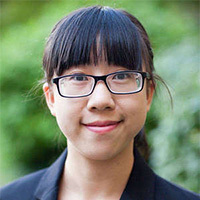
Yujia Wang is a sixth-year graduate student advised by Prof. William Schneider, Dorini Family Chair of Energy Studies and Department Chair in the Department of Chemical and Biomolecular Engineering. Wang presented her research titled, “Computational Investigation of the Identity and Reactivity of Exchange Cu Sites in Zeolites for Selective Activation of Methane" during the ND Energy PD&GS Seminar in October 2021.
Wang received a 2021 Patrick and Jana Eilers Graduate Student Fellowship for her research on partial methane oxidation to methanol (PMO). Increases in shale gas production have created a global abundance of methane, the main hydrocarbon in natural gas and also a greenhouse gas.
“When used for energy production, methane is converted to water and carbon dioxide through combustion,” Wang said. “Converting methane to methanol, however, would form a liquid compound that can be transported more easily and subsequently converted into a variety of chemicals and fuels.”
The goal for Wang’s research is to gain molecular insights of the catalysts that facilitate methane to methanol conversion.
“Copper-exchanged zeolites, a type of material with well-defined porous structures, are the catalysts recently found to be active for PMO, but further fundamental molecular-level understanding is needed,” Wang said.
Wang uses computational tools to predict the identity, reactivity, and quantity of copper sites in copper-exchanged zeolites. She works daily with the Center for Research Computing (CRC), which provides high performance computing resources and staff support for her simulations.
Wang works closely with external collaborators in Prof. Rajamani Gounder’s group at Purdue University. The Gounder group is performing experiments to carefully isolate the origins of the reactivity of copper-exchanged zeolites for PMO and evaluate the mechanistic behavior of the catalysts.
“This research is significant because through molecular-level modeling and experimental efforts, we are developing structure-function relations that can predict how reactant and catalyst structures influence reactivity,” Wang said.
Wang earned her bachelor’s degree in materials physics at the University of Science and Technology of China (USTC). While she was an undergraduate student, she worked on a project to investigate the half-metallicity of materials using first-principles methods.
“Since then, I developed my interest in using and developing computational tools to discover, improve, and design materials for practical applications,” she said.
Wang chose Notre Dame because of its diverse research directions available for graduate students, noting the many opportunities within the fields of computation chemistry and chemical engineering.
“It is the right place for me because of the support from the faculty, the collaborations with academic and industry partners, and the interaction with peer students with different backgrounds,” Wang said. She praised the University’s support for graduate students through well-maintained facilities, research centers, seminars and conferences, and grant-writing resources.
Beyond the research lab, Wang is passionate about higher education and teaching related topics. She has taken courses and obtained an Online College Teaching certificate to help develop her teaching philosophy and methods.
She has also participated in Science Alive as part of the ND Energy demonstration and volunteers annually as a judge for the Northern Indiana Regional Science and Engineering Fair.
“It is always great to talk about science and engineering with these young minds, and it is a great way to serve the community,” Wang said.
Computational Materials Discovery and Design for Water Vapor Adsorption using Nanoporous Materials
October 20, 2021

Krishnendu Mukherjee is a third-year graduate student advised by Prof. Yamil J. Colón, assistant professor in the Department of Chemical and Biomolecular Engineering. Mukherjee presented his research titled, “Computational Materials Discovery and Design for Water Vapor Adsorption using Nanoporous Materials" during the ND Energy PD&GS Seminar in October 2021.
Mukherjee received a 2021 Patrick and Jana Eilers Graduate Student Fellowship for his research on water vapor adsorption and separations in porous materials. Using resources at the Center for Research Computing (CRC), Mukherjee performs molecular level simulations to discover materials for applications related to the water-energy nexus, the inextricable link between water production and consumption and energy production and consumption.
“Since laboratory experiments to discover a material can be very time consuming and often impossible, we can use computers to mimic the experimental system,” Mukherjee said. “We want to understand what characteristic or material traits are suited for separating water directly from air.”
Separations are an energy intensive process, and this research aims to improve the energy-efficiency for applications such as refrigeration systems, CO2 capture in the presence of moisture, and atmospheric water harvesting.
“Water is a major utility in energy production, and vice-versa, a large portion of energy is required to make drinkable water,” Mukherjee said. His research is motivated by the global water scarcity challenge. According to the United Nations, about half of the world’s population experiences water scarcity at least one month per year. This problem continues to intensify in drier climates such as the southwestern United States, northern Africa, south Asia, and the Middle East.
“Further, other projects that I am working on also lies in the intersection of water and energy, which is of great concern to society, since it is tied with the bigger issues of self-sustainability and renewable energy production,” Mukherjee said.
In addition to working with the CRC staff, the Colón group has an ongoing collaboration with Prof. Paul Bohn, Arthur J. Schmitt Professor of Chemical and Biomolecular Engineering, for understanding the effect of external electric field on water adsorption in a nanoporous system.
Prior to coming to Notre Dame, Mukherjee studied chemical engineering at the National Institute of Technology (NIT), Durgapur in India, earning a Bachelor of Technology degree.
“In my undergraduate years, I found modeling and simulation subfield very intriguing partly because I was interested in coding and also there was a high scalability factor involved in modeling studies, which felt like an efficient way to solve major problems,” Mukherjee said.
The high quality of computational research at Notre Dame drew Mukherjee to the University.
“Notre Dame currently has some of the leaders in the computational materials science domain and I really appreciated their latest projects,” Mukherjee said. “I really enjoy the mentorship of my advisor and the comradery of fellow lab members is very special to me, which I believe would be very difficult to find elsewhere.”
Outside of the research lab, Mukherjee stays engaged through cultural activities such as events organized by the Center for the Study of Languages and Cultures (CSLC) and the graduate student book club. The University also offers various opportunities, such as the ND Energy PD&GS Seminar Series, to develop his soft skills.
“It is a great initiative for researchers from across domains to learn and collaborate,” Mukherjee said. “We as chemical engineers seldom interact with researchers from fundamental sciences such as physics and chemistry at Notre Dame, and thus having an in-person talk is a great experience.”
Spatially-Controlled Functionalization of Nanofiltration Membranes
September 15, 2021

John Hoffman recently graduated under the advisement of Prof. William Phillip in the Department of Chemical and Biomolecular Engineering. He presented “Spatially-Controlled Functionalization of Nanofiltration Membranes” in September 2021 during ND Energy’s monthly seminar series for postdoctoral scholars and graduate students.
Hoffman received a 2021 Patrick and Jana Eilers Graduate Student Fellowship for his research on developing membranes for purifying water. Hoffman uses polymers to make films with selective permeability – to filter out salts, heavy metals, and other toxic chemicals but still allow water to flow through.
“If we can develop more energy efficient ways to produce clean water, it will not only provide more drinking water to those who need it, but will also reduce the energy demands needed to produce it,” Hoffman said. “I hope this work can develop better and cheaper membranes to help provide clean water to the people who need it.”
The codependency between clean water and energy, which is referred to as the water-energy nexus, presents a global challenge as hundreds of millions of people around the world still lack access to clean drinking water.
“This is a big problem that we need to address and will only get worse if we don’t act now,” Hoffman said.
More specifically, Hoffman’s Eilers fellowship project was focused on developing a way to produce a multi-functional membrane which consists of small domains of different functionality.
“In this way, we can enhance the utility of these membranes by incorporating more interactions between solutes in water and produce cleaner water with less energy,” Hoffman said. “This was evaluated by introducing two separate domains of different functionality, which each capture different heavy metals.”
Hoffman collaborated with Prof. Ruilan Guo’s group to synthesize polymers for his membrane research.
“Her group is very skilled in polymer chemistry and has been a great partner,” Hoffman said.
Using a laser-etched photomask, Hoffman and collaborators were able to develop a process to pattern the membrane surface. This process produced stripes, around 200 micrometers in size, capable of capturing a specific heavy metal. In this case, they were able to capture copper, which is toxic if consumed.
“Beyond improving the membrane performance, introducing these patterns can help improve sensing applications by making barcode or QR patterns, which can alert waste management systems if a high degree of toxic material is present,” Hoffman said.
Along with instrumentation in the Center for Environmental Science and Technology (CEST) and Notre Dame Integrated Imaging Facility (NDIIF), Hoffman’s research was supported by the capabilities at ND Energy’s Materials Characterization Facility (MCF). He used the FTIR to demonstrate the success of the chemical modifications to the membranes.
“Notre Dame fosters a great environment in which research can be done. Beyond the help we get from our advisors and departments, there are many great organizations that assist and provide meaningful support to us throughout our graduate careers,” Hoffman said, citing ND Energy’s seminar series and annual research symposium as examples.
Now that he has graduated, Hoffman has accepted a two-year postdoctoral fellowship at the National Institute of Standards and Technology (NIST) and will start his new position in December 2021.
“I will be working on membranes for the application of direct-air carbon capture. This is similar in respect to the capture of heavy metals from wastewater but will focus on the capture of carbon dioxide from the air. Many of the skills I learned at Notre Dame will be used, including experimental techniques such as FTIR. I’ll also learn more skills which will help me to grow as a researcher,” Hoffman said.
Targetry with Actinides: Electrospraying
April 21, 2021
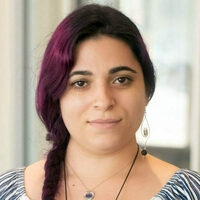
Stefania Dede is a visiting scholar advised by Prof. Ani Aprahamian, Frank M. Freimann Professor of Physics at the University of Notre Dame. Stefania presented her research titled, “Targetry with Actinides: Electrospraying" in April 2021 during ND Energy’s monthly seminar series for postdoctoral scholars and graduate students.
While Stefania’s home institution is Texas A&M University, she found a unique path to Notre Dame two years ago. Her advisor took a new position at a university in Canada, effectively halting the progress of her research project. After completing the preliminary experiments and defending her master’s, Stefania and her advisor agreed it was a good time for her to start something new.
After meeting Prof. Michael Wiescher, Frank M. Freimann Professor of Physics at Notre Dame, at a Joint Institute for Nuclear Astrophysics - Center for the Evolution of the Elements (JINA-CEE) conference, Stefania was able to connect with Prof. Aprahamian and Prof. Khachatur Manukyan, research assistant professor in the Department of Physics at Notre Dame. Interested in their research project, Stefania was offered an opportunity to complete her Ph.D. work at Notre Dame as a visiting scholar.
Stefania’s project has two parts. She is developing a novel technique for preparing actinide targets for nuclear physics and chemistry measurements, ensuring their stability through materials characterization and testing. The second part includes running a reaction to take measurements and analyze the data. Most likely, this experiment will be done at Notre Dame with a neutron beam, which is currently being developed in the physics department.
“In the past, a lot of progress has been made with the detectors, but less effort and focus has been put on the targets,” Stefania said. “Even if you have the best detectors and a well-defined beam, if your target is not good, your results will not be good.”
Beyond creating the targets, characterization is critical for gaining a complete knowledge of the materials. For example, Stefania is checking for uniformity in the sample and analyzing the surface.
“We’re determining if the layer is crystalline, amorphous, or if it is porous inside,” Stefania said. Current targets are being created from uranium, and future work will include americium and thorium.
“Actinides have an extra level of difficulty that you don’t have with materials that are not radioactive,” Stefania said. “You also have a very specific amount of material that you can’t just throw away.”
Although she is a physicist, Stefania’s research interests are focused more on real-world applications. She earned her bachelor’s degree in applied mathematics and physical sciences at the National Technical University of Athens in Greece. Referencing the uranium clusters being synthesized in the Actinide Center for Excellence (ACE), she noted that this type of research could lead to reducing the size of nuclear fuel rods in reactors.
“I was interested in being in a laboratory creating actinide targets and not just sitting in front of a computer all day,” she said, contrasting it with her previous research experience which was focused more on coding.
Measurements for this project are taken at several facilities across campus, including the Center for Environmental Science and Technology (CEST), Notre Dame Integrated Imaging Facility (NDIIF), and ND Energy’s Materials Characterization Facility (MCF).
“We are mostly using the XPS to determine exactly what kind of uranium oxide we have,” Stefania said of her use of the instrumentation in the MCF. “Lately we have been using it to give us a depth profile of our target, which gives us a sense of variations within the sample.”
Unlike conventional methods that may only provide a nominal thickness, this extensive characterization provides a clearer picture of the material’s properties and minimizes the risk of errors associated with the target.
For Stefania, having access to a combination of facilities and gaining guidance and support from several individuals make Notre Dame the right place to conduct her research. She lauded the University’s commitment to continually upgrading instrumentation to produce better data and praised the experience and knowledge of Aprahamian and Manukyan.
“Notre Dame strives for perfection,” she concluded. “I don’t think I could do this kind of research at any other university.”
Leveraging Nitrogen-Linkages in the Formation of a Porous Thorium-Organic Nanotube
April 21, 2021
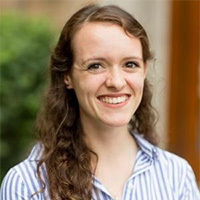
Ashley Hastings is a third-year graduate student advised by Prof. Amy Hixon, associate professor in the Department of Civil and Environmental Engineering and Earth Sciences. Hastings presented her research titled, “Leveraging Nitrogen-Linkages in the Formation of a Porous Thorium-Organic Nanotube" during the ND Energy PD&GS Seminar in April 2021.
Hastings’ research is focused on the actinide elements, which bear great importance for the interests of nuclear power production and security. The actinide series is comprised of the chemical elements with atomic numbers 89 to 103 (actinium through lawrencium).
“These elements are still relatively new compared to the rest of the periodic table, and there are gaps in our fundamental knowledge of them,” Hastings said.
To fill these gaps, Hastings makes new actinide-based materials and studies their properties. She synthesizes porous materials known as metal-organic frameworks (MOFs). MOFs are useful for many practical applications in nuclear energy, such as waste separation and storage, due to their high stability and surface areas.
“As the actinide elements are radioactive, we are definitely interested in exploring stable chemical forms,” Hastings said. “Actinide-based MOFs meet this need as well as a platform for sequestering other toxic species like fission products or volatile iodine.”
As part of the National Nuclear Security Administration (NNSA)-funded Actinide Center of Excellence (ACE), Hastings’ research benefits from extensive collaboration. She works with MOF experts at Northwestern University and computational chemists at the University of Minnesota.
While the labs within ACE are home to many of the analytical techniques she needs to conduct her research, Hastings also utilizes ND Energy’s Materials Characterization Facility (MCF) for other capabilities. She has been trained on powder X-ray diffraction (PXRD), Raman spectroscopy, X-ray photoelectron spectroscopy (XPS), and thermogravimetric analysis coupled with mass spectrometry (TGA-MS).
“Ian Lightcap and Anna Matzner have been integral in my instrument training and incredibly available for research support,” Hastings said of the staff at the MCF.
Hastings earned her bachelor’s degree in chemistry at the University of Mary Hardin-Baylor in Belton, Texas. Prior to her senior year, she participated in a nuclear and radiochemistry summer school at Brookhaven National Laboratory. There she was introduced to the field and made a connection that would ultimately result in her working in the Hixon group. By the time she visited Notre Dame as a prospective student, it was her top choice for graduate school.
“I was immediately attracted to the research as well as the group dynamic. We are quite cooperative and there are many avenues for support,” Hastings said. “As a graduate student now, I can see how these qualities are incredibly beneficial.”
Throughout the pandemic, Hastings has felt supported by the University with job security, access to testing and vaccination, and protective measures that ensure safe in-person research.
“I took the opportunity to prepare for my oral candidacy exam when we had to work from home, but thankfully we were some of the first to return to in-person research,” she said.
Through her research, Hastings has learned that it is important to be transparent about the scientific process. While researchers often consult the literature to plan their experiments, it’s critical to understand those are merely the successes. For Hastings, earning a Ph.D. is about building on a foundation of failed experiments to find what ultimately works.
“This can be discouraging as a graduate student navigating their individual research,” Hastings said. “My hope is that we can work to be more candid about the experimental progression that results in interesting stories and solutions to research problems.”
You can learn more about Hastings and her research here.
A spatio-temporal model for vertical extrapolation of wind speed and wind energy assessment
March 17, 2021
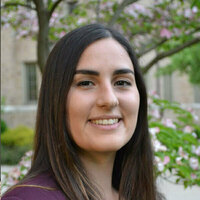
Mariana Alifa is a third-year graduate student co-advised by Paola Crippa, assistant professor, and Diogo Bolster, Professor and Notre Dame Collegiate Chair in Hydrology and director of graduate studies, in the Department of Civil and Environmental Engineering and Earth Sciences. Alifa presented her research titled, "A spatio-temporal model for vertical extrapolation of wind speed and wind energy assessment" during the ND Energy PD&GS Seminar in March 2021.
Although her main thesis direction studies the impact of air pollution, Alifa had the opportunity to develop a secondary research focus in the field of wind energy. Her project seeks to find a reliable way to predict the wind speeds at the height of a wind turbine’s rotor, based on the wind speed measured near the ground.
“When exploring a site’s suitability for deployment of wind turbines, data scarcity is a common obstacle to the accurate assessment of the wind power potential of the site,” Alifa said, noting the difficulty of measuring wind speed at heights of more than 400 feet.
Using models to extrapolate the wind speed from the surface to the rotor height has become an essential part of the assessments for wind energy potential. However, traditional models do not always account for the variability in wind conditions that can happen seasonally or even within different hours of the day, leading to significant estimation errors.
“The new statistical model we are introducing takes into account the temporal variation of wind speed, providing better results than traditional models without adding too much complexity to the extrapolation method,” Alifa said.
This research project is part of a larger grant to investigate the wind energy potential of Saudi Arabia in collaboration with the King Abdullah University of Science and Technology (KAUST). Additionally, she collaborates on campus with Stefano Castruccio, assistant professor in the Department of Applied and Computational Mathematics and Statistics.
The group has made extensive use of the resources at the Center for Research Computing (CRC) for running and analyzing atmospheric model simulations for this project.
“This project is one of the many examples of the ongoing revision of established assumptions,” Alifa said. “This is good news, because it allows us to gain better knowledge of the potential of wind energy and, therefore, achieve more efficient real-world implementation.”
However, Alifa acknowledges that updating old hypotheses can create a challenge in the communication of these results to the general public, who may perceive these changes as indicators of uncertainty or lack of knowledge in the field.
“This applies not only to wind energy, but to all environmental research,” she said. “It is up to us as researchers to frame our new understanding of the processes we study as a continuation of previous work, such that the new knowledge is received as an update to our previous notions instead of as a contradiction.”
Alifa completed her undergraduate studies at Loyola Marymount University in Los Angeles, California. Originally a physics major, she switched her focus to civil engineering upon realizing she was interested in the applied problem-solving component of engineering.
“My mixed interests for research and applied problem-solving are what led me to seek opportunities in environmental and energy research for graduate school, since I wanted to continue doing research that could inform real-life decisions and applications,” Alifa said.
Alifa felt right at home at Notre Dame from the time she interviewed. She was confident that she would be able to build a stable community of peers and mentors in her department. In addition to her home department, Alifa credits The Graduate School for providing useful resources for personal and professional development.
“Knowing I have people to fall back on if things don’t go to plan has allowed me to take more risks and be more creative with my research ideas,” Alifa said.
You can learn more about Alifa and her research here.
Integrated molecular and process design for the sustainable separation of azeotropic hydrofluorocarbon refrigerant mixtures
February 17, 2021
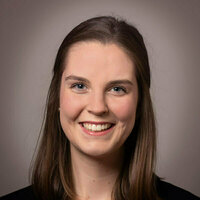
Bridgette Befort is a third-year graduate student in the Department of Chemical and Biomolecular Engineering. She presented "Integrated molecular and process design for the sustainable separation of azeotropic hydrofluorocarbon refrigerant mixtures" at the ND Energy PD&GS Seminar in February 2021.
Befort is co-advised by Profs. Alex Dowling and Edward Maginn on a project which aims to design processes that make separations in the chemical industry more efficient and sustainable. Specifically, the focus is on the phaseout of hydrofluorocarbon refrigerant mixtures which are used in a wide variety of items such as household refrigerators and automobile air conditioning systems.
“It’s environmentally imperative right now,” Befort said. “Due to their high global warming potential, these refrigerants have been mandated to be phased out by different international agreements and most recently by the stimulus bill that was passed by the U.S. Congress at the end of December 2020.”
The phase out comes in the form of separations of these refrigerant mixtures.
“We don’t want to just throw the mixtures of refrigerants away. We want to break them up because their individual components can be recycled into new products,” Befort said.
Befort’s research is split into two different approaches to make the implementation of this phase out more sustainable. She floats between work on the molecular-level side with the Maginn group, while the Dowling group focuses more on the process-level side.
“We’re trying to design new molecules which will enable us to more efficiently separate these refrigerant mixtures into their usable components, and we’re also trying to design and optimize processes so we can actually make that separation affordable by reducing energy consumption,” Befort said.
Befort earned her bachelor’s degree in chemical engineering at the University of Kansas. She gained extensive research experience during her undergraduate career, mostly on the process-level side of optimization and modeling similar to her work in the Dowling lab.
“What interested me in this project at Notre Dame is that I could combine something new into an interest that I already had,” Befort said of the opportunity to explore molecular-level engineering in the Maginn lab.
In choosing Notre Dame, Befort was intrigued by the interdisciplinary nature of a co-advised research project, which has taught her the value of communication.
“Communication is really essential for interdisciplinary research,” Befort said. “If you can’t bridge gaps in understanding between different scientific communities, then productivity is very difficult.”
The Dowling and Maginn labs are among the eight ND Energy affiliated research groups which constitute the Computational Molecular Science and Engineering Laboratory (CoMSEL), a cross-college computational research and collaborative space for both scientists and engineers. Befort praised the sense of community in CoMSEL as an environment which has helped her learn and has supported her research.
Beyond her research goals, Befort feels Notre Dame provides many opportunities to develop leadership skills and serve the community. Befort serves as the Academic Affairs chair for the Graduate Student Union. She is active in many community outreach activities including Science Alive and the Northern Indiana Regional Science and Engineering Fair, and she also volunteers weekly as a tutor for high school students in the South Bend area through the TRiO Upward Bound program.
“Being a scientist is a service job.” Befort said. “We’re supposed to be learning and discovering new information and technology, but this knowledge should be used to help each other and help the world.”
Formation of Uranyl Peroxide Nanoclusters Under Irradiation
February 17, 2021

Daniel Felton is a third-year graduate student in the Department of Chemistry and Biochemistry and is advised by Prof. Peter C. Burns. He presented "Formation of Uranyl Peroxide Nanoclusters Under Irradiation" at the ND Energy PD&GS Seminar in February 2021.
Felton studies how radiation affects the formation and stability of uranium compounds in nuclear waste and nuclear reactors.
“We need to better understand the speciation of nuclear waste and the fate of uranium were it to leak out of its containment,” Felton said of the importance of understanding the implications of his research.
“What I am studying is how uranium containing nuclear waste can migrate into groundwater and be transported over long distances. Knowing that there is nuclear waste being stored in Washington state that is leaked out of its containment is important for the public to be aware of and seek more information on.”
Felton works in the Radiation Laboratory with Prof. Jay LaVerne and postdoctoral associate Melissa Fairley, utilizing the gamma, alpha, and beta radiation sources available on campus. Additionally, he has used ND Energy’s Materials Characterization Facility for Raman spectroscopy, powder X-ray diffraction, and X-ray photoelectron spectroscopy.
Working in a collaborative environment has allowed Felton to achieve his research goals.
“While there are many instruments one can learn how to operate, it is often easier to find an expert to help you collect and interpret data,” Felton said. “I am also thankful for having a supporting lab as well as chemistry cohort that has helped me get through many a hard time.”
Felton earned his bachelor’s degree in chemistry and physics at the University of Idaho. The proximity of the Hanford nuclear waste site and the Idaho National Laboratories in the region has resulted in an extensive amount of research into nuclear energy and chemistry at the institution. Felton began researching actinide chemistry in his sophomore year and continued through the rest of his undergraduate career.
The opportunity to work with a leader in the field of actinide chemistry such as Prof. Burns was a drawing factor for Felton in choosing Notre Dame.
“Peter Burns has the best actinide chemistry lab of any university in the United States,” Felton said. “That paired with the Radiation Laboratory and particle accelerators on campus make it the ideal place to study radiation effects on actinide materials.”
Felton believes programs offered by ND Energy have helped broaden his understanding of the need for sustainable energy globally. He noted a 2020 Distinguished Lecture by Christopher Cahill for providing insight into how teaching nuclear science to policy makers can help them better understand the laws that they make.
“These topics have really changed how I think about my future career as well as current research,” Felton said.
Understanding Fundamental Properties of the Deep Eutectic Solvent Glyceline through Molecular Simulations
January 21, 2021
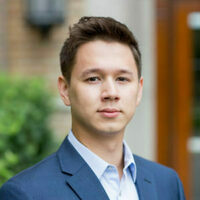
Derrick Poe is a third year graduate student advised by Prof. Edward Maginn in the Department of Chemical and Biomolecular Engineering. He presented "Understanding Fundamental Properties of the Deep Eutectic Solvent Glyceline through Molecular Simulations" at the ND Energy PD&GS Seminar in January 2021.
Poe’s research is part of the Breakthrough Electrolytes for Energy Storage (BEES) Energy Frontier Research Center (EFRC) led by Case Western Reserve University. The project, which is funded by the Department of Energy, aims to develop a new solvent to use in flow batteries for grid-scale energy storage.
BEES researchers are attempting to gain an understanding of the properties of Type III deep eutectic solvents, a class of liquids comprised of a hydrogen bond donor and hydrogen bond acceptor. They are non-toxic, biodegradable, nonvolatile, nonflammable and have a high degree of structural flexibility.
Work in the Maginn group is focused on molecular dynamic simulations of these solvents, which provide theoretical and computational support for the project.
“We try to figure out if there are any unique properties that are different from conventional solvents,” Poe said. “Then we look at the relationships between each of those molecules that we can either enhance or suppress to get the properties we would want for these flow batteries.”
Flow batteries are well-suited for large, scalable power delivery and energy storage that could help meet the challenges associated with intermittent sources of renewable energy such as solar and wind.
“Our focus is developing next-generation flow batteries for these grid-scale energy storage needs,” Poe said. “Energy storage is the problem we need to solve to truly get renewable energy off the ground.”
Poe earned his bachelor’s degree in chemical and biomolecular engineering at the University of Illinois at Urbana-Champaign. After graduating, he spent a few years working at a biotech company in West Lafayette, Ind. The opportunity to address a major challenge such as energy storage sparked his interest in working with Prof. Maginn on the BEES project.
“It checked all the boxes: good problem for the future, a good advisor, and computational research,” Poe said of his decision to come to Notre Dame.
Poe believes the time he spent in industry was beneficial to his admittance to Notre Dame and has helped him while working alongside people with different experiences.
“It feels like Notre Dame tries to select a good, diverse group of people,” Poe said. “It’s good to work with people from all different walks of life.”
The nature of a large EFRC grant has taught Poe how to balance collaboration with independent research.
“There are a lot of pros to collaboration,” Poe said of sharing data and getting advice on where to look in his research. “The flip side is learning how to manage when you need to do something on your own, because you can’t always wait for other people to inform your decisions.”
For Poe, the University’s commitment to becoming a preeminent research institution has been evident in its investment in graduate students, faculty, and facilities. He noted the recent upgrades to the computational research labs and offices as an example.
“There are consistently plenty of resources to do research. It’s never a question of getting time, it’s more of an issue of thinking of a good use for these tools,” Poe said. “It’s just a great and comfortable environment to do research.”